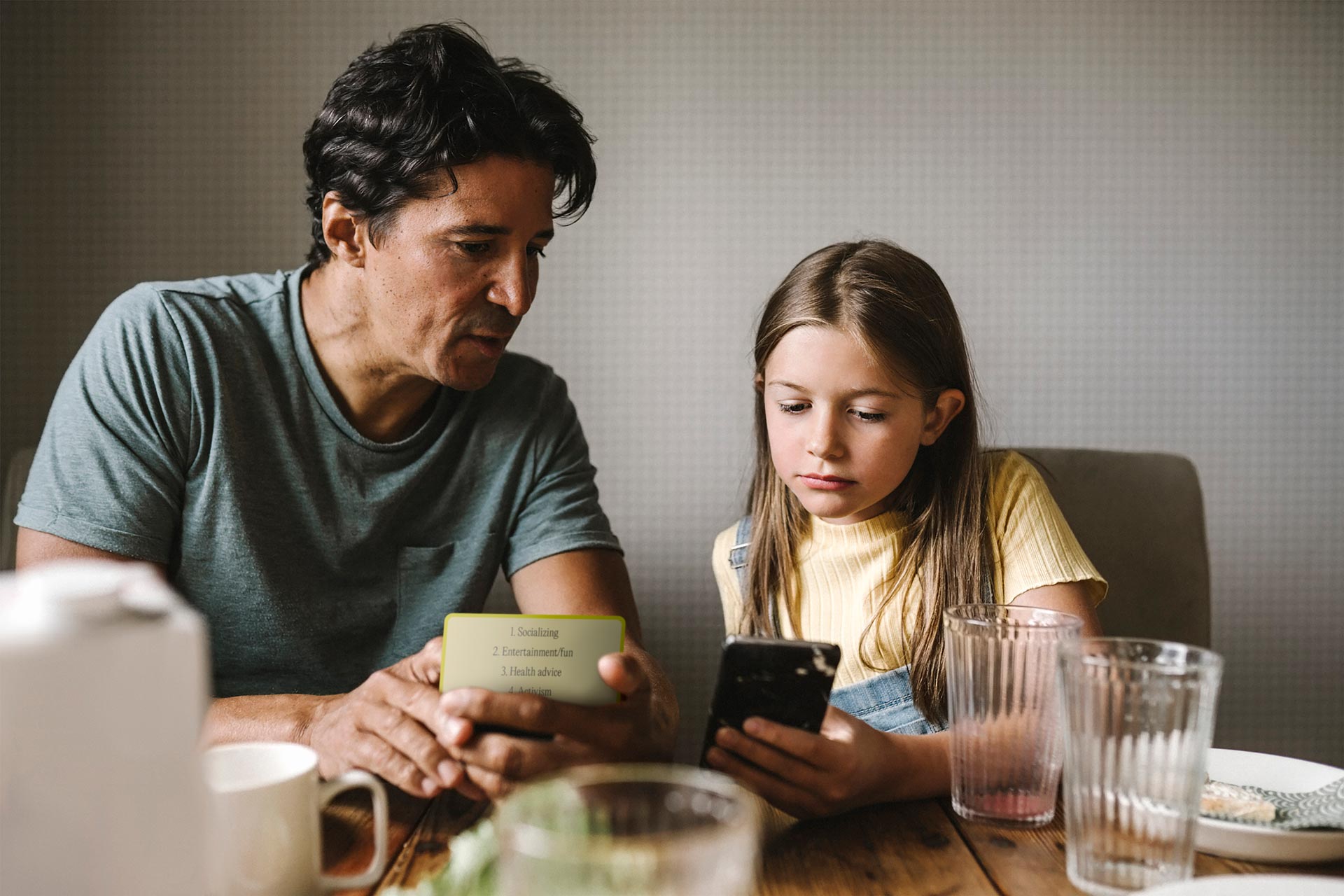Spotting the signs: How kids can learn to stay safe online
Children are curious and naturally want to explore their offline and online environments. This can be nerve-racking for many parents as we feel anxious about how to keep our kids safe. Very often, we end up spending more time and energy protecting them in the physical world and less in the digital one.
Research shows that one of the best ways to protect kids online is simply knowing how to talk to kids about online safety. We need to talk about some fundamental critical thinking skills and make sure they understand them. This will help empower them to make smart and responsible choices when we aren’t there.

Being able to quickly spot danger on the digital landscape and know how to avoid it is the best way to ensure online safety for kids. Preparation is the best weapon we can arm them with.
We’ve done the research to help you understand some of the most common risks our children come across on their digital adventures, along with practical internet safety tips for parents on how to handle them.
Did You Know?
According to Pew Research, nearly 60% of teens say they've been contacted by strangers online.
1. Online predators & fake profiles – Teach kids to spot the red flags
The danger:
Kids may unknowingly connect with adults pretending to be their peers, who can manipulate them into harmful or inappropriate activities.
Solution:
Discuss how to recognize suspicious behavior and signs of online predators, such as overly friendly strangers or pushy behavior asking personal questions or private information.

Emphasize the importance of never sharing personal details or having secret friends online as part of basic internet safety for children. Try to get agreement on this. Most importantly, keep an open dialogue and non-judgmental attitude so they feel comfortable sharing their concerns or uncomfortable experiences.
2. Cyberbullying – What to watch for and how to support your child
The danger:
Cyberbullying can be relentless, happening around the clock and leaving victims feeling like they have no escape. Of course, none of us wants our child to be the victim of bullying, but we also have to stay aware that they don’t become the bully either.
Solution:
Discuss the impact of words and actions online and encourage empathy and kindness. If we stay curious and open to talking about our kids’ online lives, we have a better chance of spotting signs of cyberbullying - whether they’re the victim, the aggressor, or just a witness.
It might be a child’s problem, but it’s an adult’s responsibility to help solve it and know how to stop cyberbullying. Kids need our support.
Teaching empathy plays a crucial role in cyberbullying prevention, and we must remember that empathy starts with us. Having regular conversations about potential online risks, without catastrophizing them, helps children stay safe, especially when we aren’t there to protect them.
3. Harmful & inappropriate content – Building your child’s media filter
The danger:
Children may come across violent, sexual, or emotionally distressing content. It can appear in their social media news feed, their inbox, or as the result of a browser search gone wrong.

Some content is not immediately disturbing but can harm children's well-being over time. Much of the regular content on social media is often polished and edited to make people and their lives seem perfect, giving kids watching a negative feeling about their own appearance and life.
Solution:
When kids are exposed to adult content or otherwise inappropriate content online, they can be deeply affected and need support in processing these experiences.
Together, we can decide on strategies for how to handle situations where they see something that really isn’t meant for kids or makes them feel uncomfortable. This could be seeking help from an adult or immediately closing the browser window.
Teaching media literacy for kids is also very useful in understanding how many images on social media are fabricated, edited, and far from reality. We can help develop critical thinking by talking about how much of what we see online is curated.
Get in the habit of talking openly about healthy media use and reinforcing a positive self-image. Encourage content that makes them feel good and fosters growth and confidence.
4. Screen time addiction – Spot the signs & set healthy limits
The danger:
Excessive screen time and screen time addiction can interfere with schoolwork, physical activity, and social interactions, leading to a sedentary lifestyle. Spending most of the day online can also lead to overexposure to online content, which, in high doses and of the wrong kind, can affect well-being.

Solution:
Don’t be afraid to set clear boundaries and screen time limits for children. The older our kids are, the more they can be involved in creating the guidelines, not only for the amount of time spent online but also for what kind of activities the time is spent on.
When it comes to kids’ screen time, less is better. Young kids unable to understand or process what they are watching shouldn't be left unattended with their devices or allowed screen time for longer periods.
We also have to be mindful of our phone use. Remember, we are their role models for good habits and introducing other activities than screens.
5. Privacy risks & online scams – Teach kids to think before they share
The danger:
Sharing private information, explicit images, or messages online can end up in the wrong hands and lead to emotional distress, identity theft, or scams. Having public social media accounts can also give scammers or predators access to content and information. Our kids might not understand the importance of keeping this kind of information private or the dangers of sharing photos online.
Solution:
When teaching online privacy for kids and protecting kids from scams, we must help them understand the importance of privacy settings and consent, and why personal information should never be shared online.
They also need to learn that not everyone online can be trusted, and pictures sent to a friend can be misused if the friendship ends. We can talk with our kids about thinking carefully before posting or sending sensitive content and always considering the potential consequences.
To make sure you cover all the important topics to keep your child safe online, we highly recommend that families try our Raising Digital Citizens conversation cards. It’s a fun and easy way to keep kids safe online.





